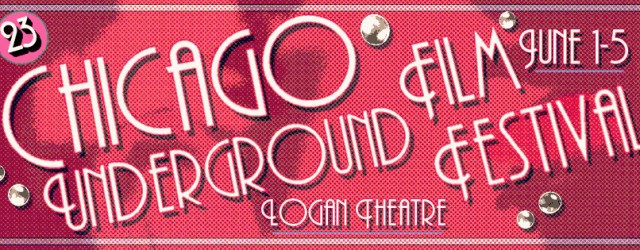
The 2016 Chicago Underground Film Festival was held at the Logan Theatre from June 1-5. This year’s schedule included 11 features and over 100 shorts, including special retrospective programs of work by Tony Conrad and Luther Price. The following is Daily Grindhouse’s coverage of the feature films at the festival in order of screening.
June 1, 2016

TONY CONRAD: COMPLETELY IN THE PRESENT (USA, dir. Tyler Hubby)
The opening film of this year’s Chicago Underground Film Festival was something of a bittersweet affair. This was the world premiere of Tyler Hubby’s documentary on Tony Conrad, and Conrad was scheduled to appear at the festival as a special guest and receive the festival’s Lifetime Achievement Award. Unfortunately, he passed away in April of this year. His widow, Paige Sarlin, accepted the award on Conrad’s behalf. It’s hard to imagine a better tribute to Tony Conrad than Tyler Hubby’s film, which features a lot of footage of Conrad talking candidly about his life and his work. Conrad had an infectious sense of mischief and a disdain for any kind of authority, and just spending time listening to him talk is a joy. Packed with photos, recordings, and film and video clips of his work from the 60s to the 2000s as well as interviews with some of Conrad’s collaborators and fans (including Jim O’Rourke and Moby), COMPLETELY IN THE PRESENT does an admirable job of compressing a massively important and influential career into a feature-length documentary without feeling rushed. It’s tough to imagine watching this film and not feeling immediately compelled to dive into Tony Conrad’s work.
June 2, 2016
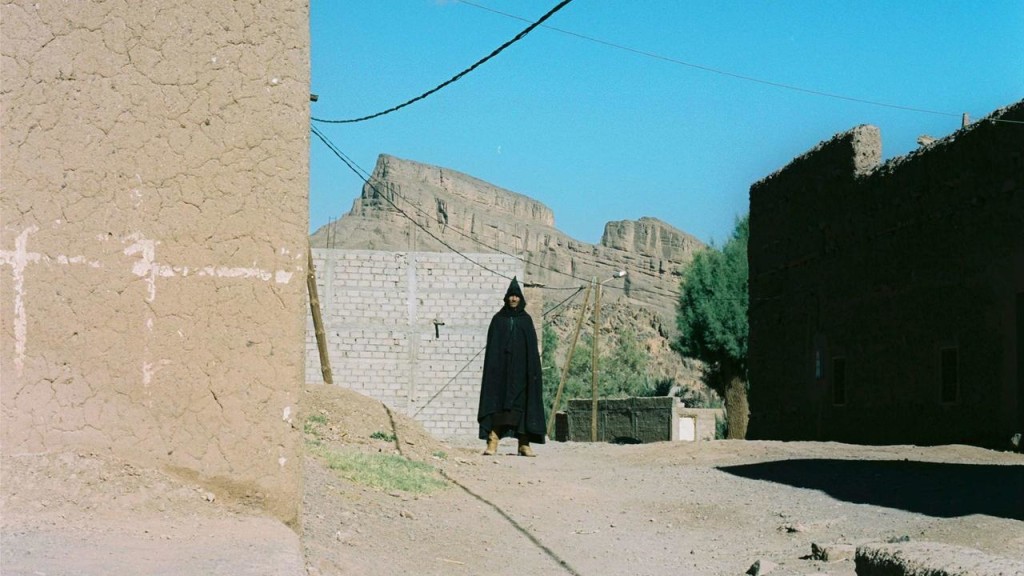
THE SKY TREMBLES AND THE EARTH IS AFRAID AND THE TWO EYES ARE NOT BROTHERS (UK, dir. Ben Rivers)
Ben Rivers’s previous feature, A SPELL TO WARD OFF THE DARKNESS, made a lot of waves on the festival circuit a few years ago. Co-directed with Ben Russell, that film blurred the lines between documentary and narrative, and Rivers’s follow-up does the same. The opening section of THE SKY TREMBLES follows director Oliver Laxe (playing himself) as he shoots his feature film MIMOSAS in Morocco. Rivers keeps his distance and observes patiently, but when Laxe strikes off on his own the film transitions from filmmaking documentary to something completely different. As in DARKNESS, there is no shortage of breathtaking imagery in THE SKY TREMBLES—this is one of the two films at the festival shot on 35mm — but ultimately it is not as satisfying a viewing experience. Still, the film’s powerful atmosphere is undeniable.
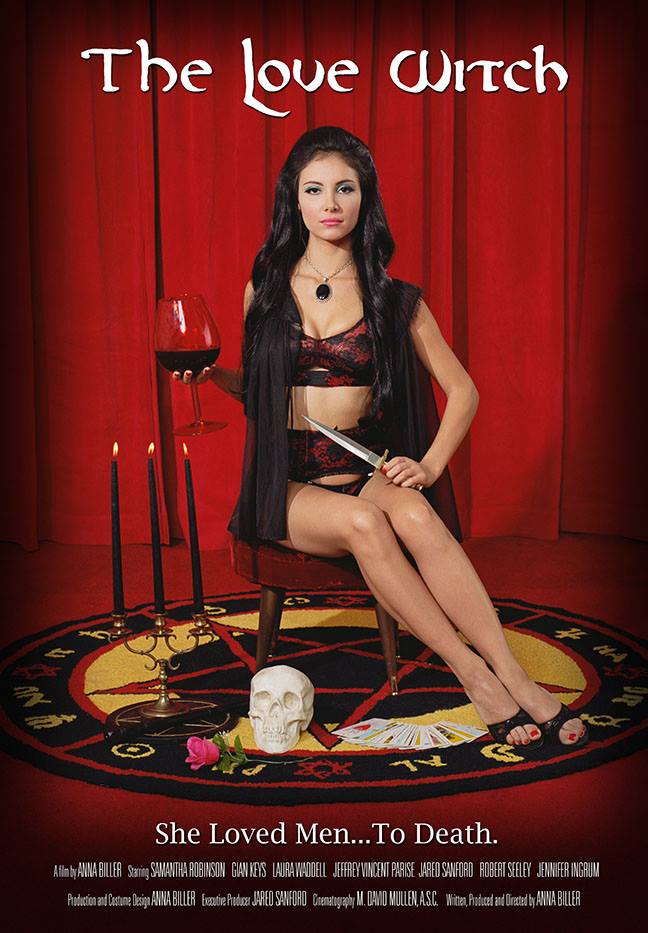
THE LOVE WITCH (USA, dir. Anna Biller)
It’s been nearly a decade since Anna Biller’s debut feature VIVA, but the results speak for themselves. THE LOVE WITCH is an astonishing feature, shot and edited on 35mm, that displays once again Biller’s staggering talents. Elaine (Samantha Robinson) moves to a small town after the death of her ex-husband Jerry (Stephen Wozniak). Elaine killed Jerry, possibly accidentally, and is now obsessed with finding the perfect man using love magick. Her approach has some unintended side effects, though, including death, and soon the bodies begin to pile up. Anna Biller not only wrote, directed, and edited the film but designed the costumes and sets as well as composed songs for it. Her obsessive attention to 70s period detail is unparalleled, as well as her fluency in the visual language of exploitation films of that era: if you watched almost any given stretch of the film and didn’t know any better, you would absolutely believe it was made in the early 70s. This time, though, Biller has set the film in present day, using the idealized world of garish wallpaper, lurid paintings, lush soundtrack, and gorgeous costumes as a way of showing how Elaine sees the world. It’s a choice that adds even more depth to her trademark style of using signifiers of low-budget exploitation history to explore concerns about gender roles in modern society. It also happens to be a hell of a lot of fun. This is easily one of the best films of the year so far.
June 3, 2016
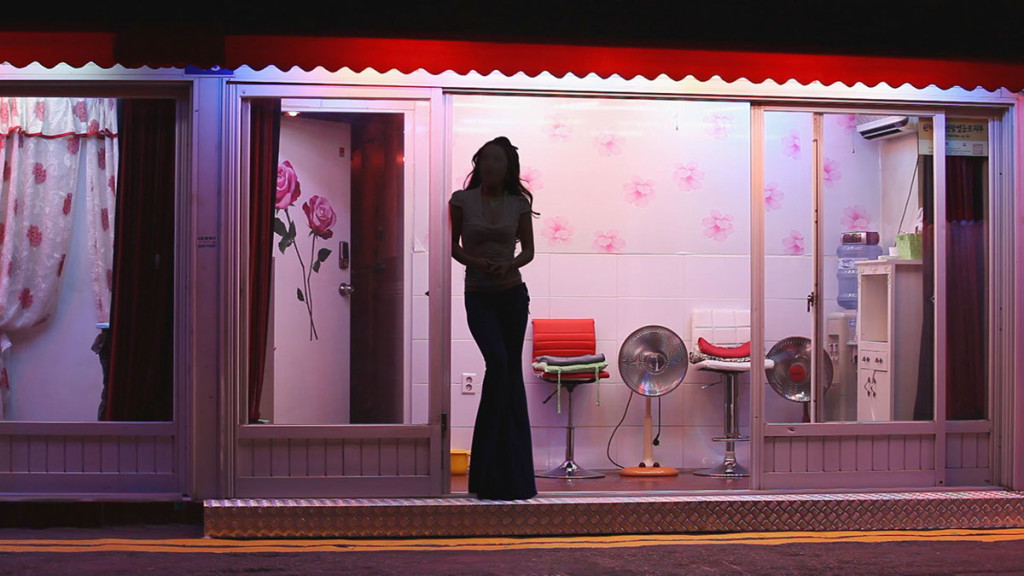
GRACE PERIOD (USA, dir. Caroline Key & Kim Kyung Mook)
New York-based filmmaker Caroline Key’s debut feature-length documentary GRACE PERIOD is a portrait of the women who worked in the Yeongdeungpo brothels in Seoul, South Korea. Following the passage of a sex trade law in 2004 and encroaching gentrification from corporate and retail interests, police and government had been making life progressively more difficult for the women working in Yeongdeungpo. GRACE PERIOD combines interviews with the women with footage shot in the brothels of those spaces minus their inhabitants. This gives the viewer an intimate portrait of these women without showing them on camera, although we do see many of them in footage they shot themselves of some of their street protests in 2011. When the women do appear in Key’s footage, they appear as black silhouettes against the bright colors of their rooms open to the street. Key and her co-director Kim KyungMook have created an elegant, heartbreaking portrait of a community of women on the fringes of society who find themselves with dwindling options in the face of oppression.

DIRECTOR’S COMMENTARY: TERROR OF FRANKENSTEIN (USA, dir. Tim Kirk)
Tim Kirk was a producer on Rodney Ascher’s documentaries ROOM 237 (about people obsessed with Stanley Kubrick’s THE SHINING, made entirely with clips from other films set to voiceover interviews) and THE NIGHTMARE (on sleep paralysis, which featured re-enactments of its participants’ experiences staged like a deconstructionist theater piece), so it makes sense that his feature directorial debut is built on another ambitiously bizarre concept. Taking TERROR OF FRANKENSTEIN, a real 1977 Swedish film, Kirk and co-writer Jay Kirk have created a lengthy fake history leading to the production of the film and its subsequent infamy after a horrific tragedy sparked morbid interest in audiences. The film is presented as a director’s commentary between the film’s director Gavin Merrill (Clu Gulager) and writer David Falks (Zack Norman) while the actual film plays out in its entirety from what looks like a bleary VHS transfer. It starts out innocuously enough, with Merrill trying to pry stories out of Falks as he talks about the film’s cult of “Frankheads” and midnight screenings of the film, but talk soon turns to the sinister methods they used to get actors into character and other problems both personal and professional happening behind the scenes. There are moments of bleak humor through DIRECTOR’S COMMENTARY, but the rhythm of the commentary itself hews closer to a radio drama than an actual filmmaker commentary track. This would probably work very well in a live environment with the actors in front of the audience, but as a recorded artifact, the theatrical nature of the dialogue often undermines the illusion of authenticity. It’s another fascinating concept from Kirk and Ascher (who acted as producer and editor here), but despite fine work from its cast, a film version may ironically have been the wrong medium for it.
— JASON COFFMAN.
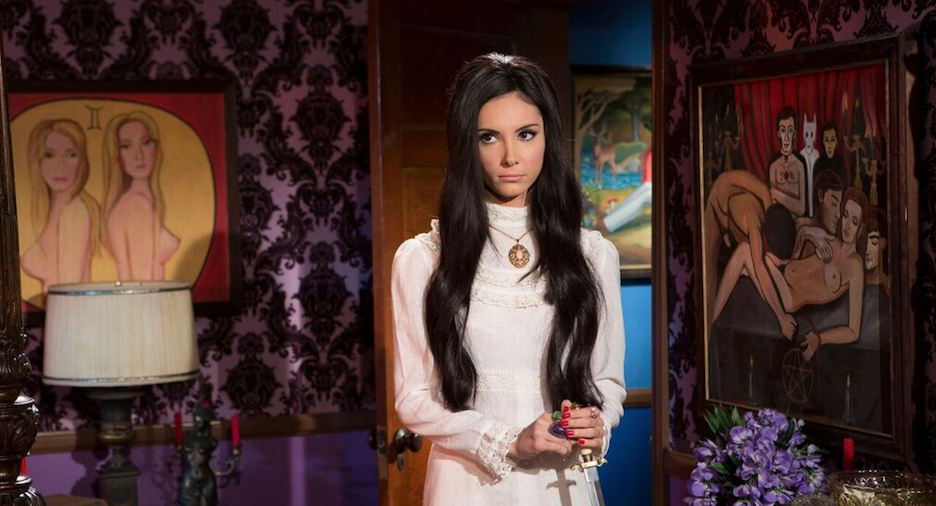
LOOKING FOR UNDERGROUND CULT MOVIES, DVDs, LIMITED VHS & OTHER COOL STUFF?
- [CINEPOCALYPSE 2017] FIVE FILMS YOU CAN’T MISS AT CINEPOCALYPSE! - October 31, 2017
- Hop into Jason’s Ride for a Look at the Wild World of Vansploitation! - August 11, 2014
Tags: Chicago, Clu Gulager, Festivals, Jason Coffman, rodney ascher, Screenings


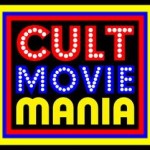


No Comments